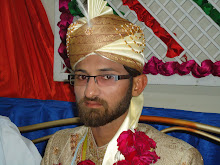- Calendar: Islamic practices are based on the lunar calendar. However, Muslims also use the Gregorian calendar in their daily religious lives. Hence, the Islamic calendar includes both the common era and the migration (Higra) year of the Prophet of Islam from Makkah to Madinah in the year of 623 C.E.
- Celebrations (Eid): Muslims have two celebrations (Eid); namely, Eid of Sacrifice and Eid of Fast-Breaking. The Eid of Sacrifice is in remembrance of the sacrifice to be by Prophet Abraham of his son. The Eid of Fast-Breaking comes at the end of the month of fasting, Ramadan.
- Diets: Islam allows Muslims to eat everything which is good for the health. It restricts certain items such as pork and its by-products, alcohol and any narcotic or addictive drugs.
- Place of Worship: The place of worship is called Mosque or Masjid. There are three holy places of worship for the Muslims in the world. These are: Mosque of Kaaba in Makkah, Mosque of the Prophet Muhammad in Madinah, and Masjid Aqsa, adjacent to the Dome of the Rock in Jerusalem.
A Muslim may pray any where in the world whether in a Mosque, a house, an office, or outside. The whole world is a place of worship. It is preferable that Muslims pray in a congregation, however, he/she may pray individually anywhere. - Holidays: The holy day of the Muslims is Friday. It is considered to be sacred and the Day of Judgment will take place on Friday. Muslims join together shortly after noon on Friday for the Friday congregational prayer in a Mosque. A leader (Imam) gives a sermon (Khutba) and leads the congregational prayer.
- Distribution of Muslims in North America: There are approximately five million Muslims in North America and are distributed in its major cities such as New York, Detroit, Boston, Toledo, Chicago, Los Angeles, San Francisco, Houston, Cedar Rapids (Iowa), Toronto, Montreal, Ottawa, Edmonton, Vancouver, Windsor, Winnipeg, Calgary, and others.
- Contributions in North America: Muslims are not established in North America. Sears Tower and the John Hancock buildings in Chicago were designed by a Muslim chief architect, originally from Bangladesh. Muslims have established academic institutions, community centers and organizations, schools and places of worship. They live in peace and harmony among themselves and among other groups of people in the society. The rate of crime among Muslims is very minimal. Muslims in North America are highly educated and they have added to the success of American scientific and technological fields.
The Muslims of the early period of the Islamic era were pioneers in medicine, chemistry, physics, geography, navigation, arts, poetry, mathematics, algebra, logarithms, calculus, etc. They contributed to the Renaissance of Europe and world civilization.
Sunday, July 26, 2009
OTHER RELATED ASPECTS:
Subscribe to:
Post Comments (Atom)


No comments:
Post a Comment